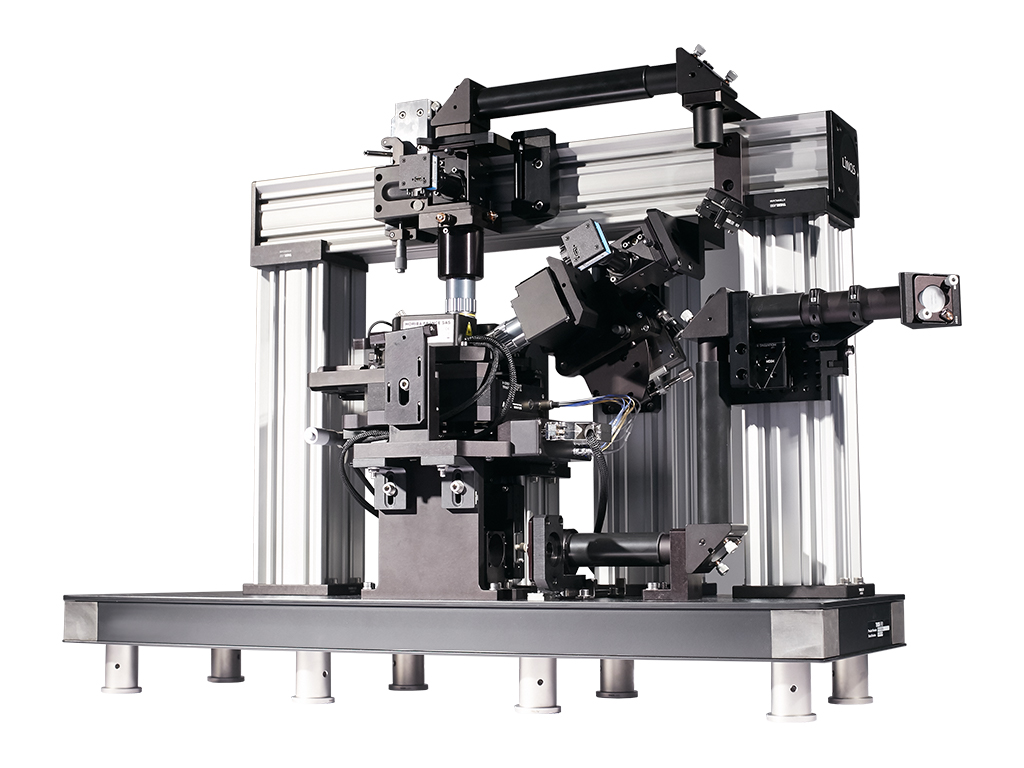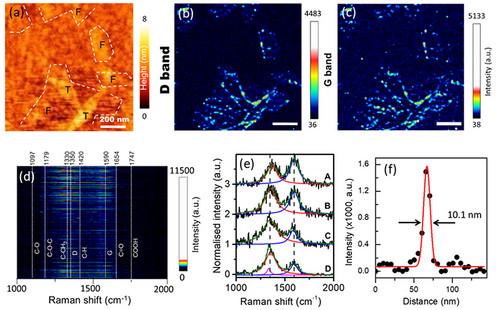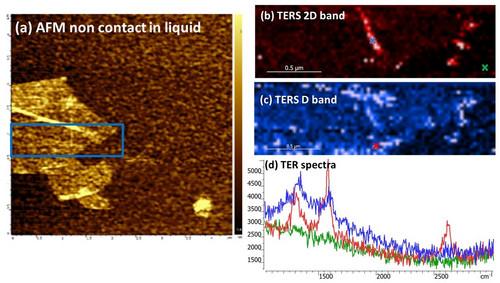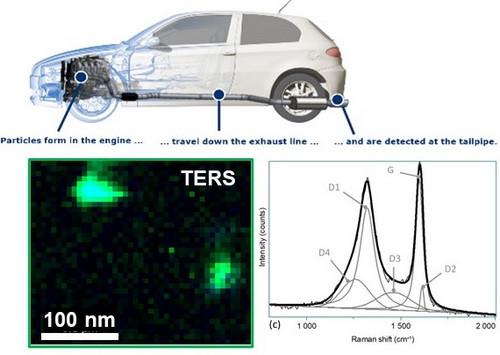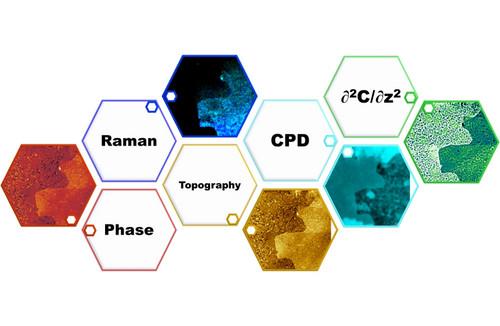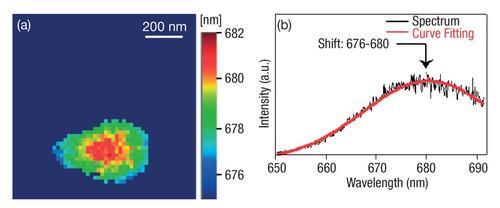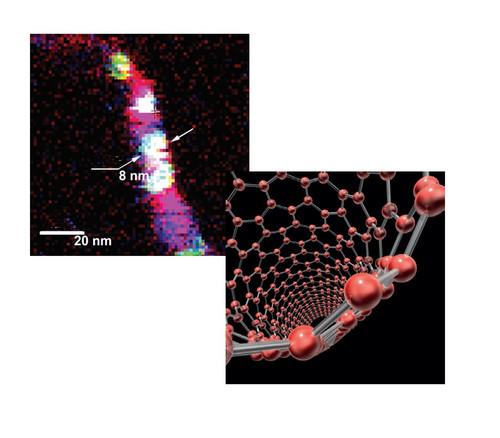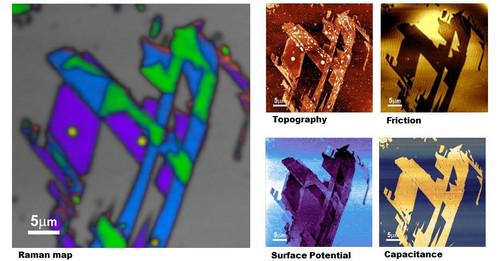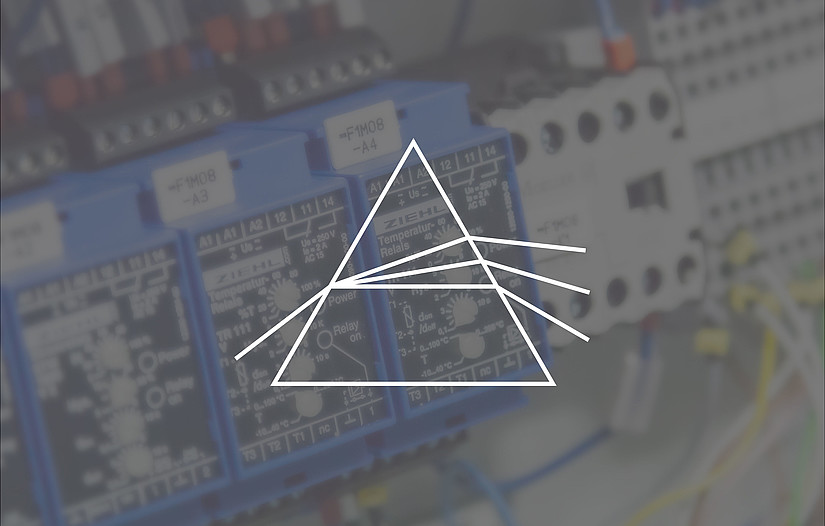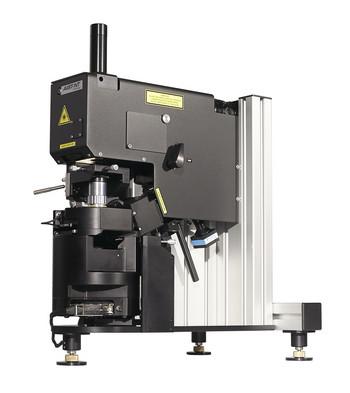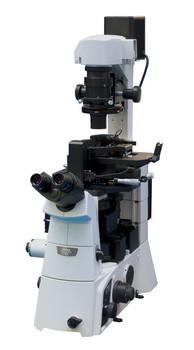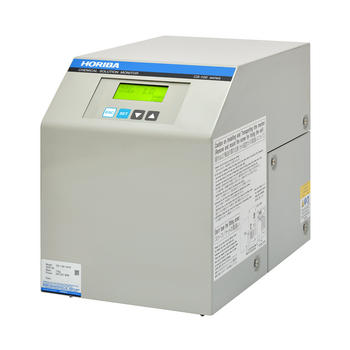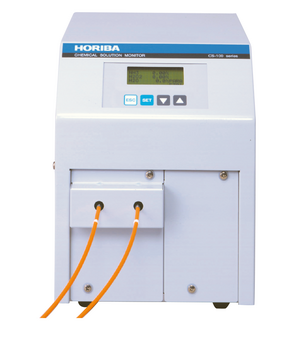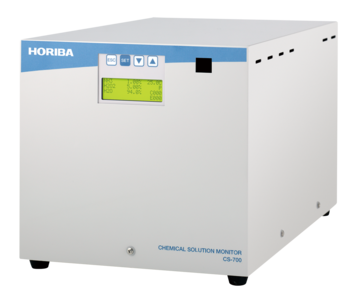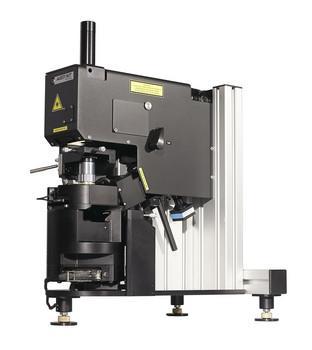Simultaneous optical accesses
The TRIOS platform combines upright and transmission configurations which allows to study transparent as well as non-transparent samples with optical, Raman, Photoluminescence and scanning probe microscopy techniques.
The TRIOS platform is a triple port configuration that brings all possible configurations into a unique platform and offers optimized solution for laser-to-tip alignment (with objective scanners).
Two simultaneous optical accesses are possible (from top and side, from side and bottom, from top and bottom).
Extraordinary productivity and easy operation
TRIOS is equipped with the fully motorized CombiScope AFM featuring automated click-on-a-button laser-to-tip alignment. The fully motorized cantilever holder and photodiode positioning dramatically simplify the entire system adjustment process and provide the highest level of system reproducibility. In addition, after you installed a new cantilever of the same or even of a different type, the same region of interest (within a few microns repeatability) on your sample surface can be easily found and scanned without any extra searching step.
Top level scanner
TRIOS, equipped with the CombiScope AFM, utilizes the closed loop, high-dynamics, 3-axis piezo-nanopositioning scanner from the leader in precision motion control, Physik Instrumente. The top-level scanner is the heart of the system which enables it to achieve very high levels of linearity, the highest possible robustness and extremely high precision motion.
1300 nm AFM laser
The use of 1300nm AFM laser eliminates any interference with VIS light-sensitive biological and semiconductor samples. It also makes it possible to perform simultaneous AFM and fluorescence or Raman scattering measurements without any crosstalk for most popular UV-VIS-NIR (364-830 nm) excitation lasers.
Solutions for working in liquid
The standard TRIOS sample holders accommodate all common sample substrates, including slides, coverslips, and 35 mm Petri dishes. The special design liquid cell with heating and liquid perfusion capabilities allows for carefully maintaining biological samples in their physiological environment and at temperatures up to 60°C.
All operating modes in one single instrument
The TRIOS platform comes with all modern AFM operating modes in one instrument, without any extra costs and units. It includes such application-specific modes as force mode, and nanolithographies, piezoelectric force microscopy (PFM), Kelvin Probe Microscopy and frequency modulation AFM (dynamic force microscopy with built-in PLL). In addition, the scanning tunneling microscopy (STM) head and the conductive AFM unit operating in the range 100 fA – 10 µA (with 1 nA, 100 nA, and 10 µA subranges software switchable and current noise of 60 fA RMS for 1 nA subrange) and near-field optical microscopy (SNOM) head are available as options. TRIOS can also be easily combined to our turn-key Raman/PL systems for co-localized AFM-Raman/PL measurements and Tip-enhanced optical spectroscopies (TERS: Tip-Enhanced Raman spectroscopy and TEPL: Tip-Enhanced Photoluminescence).
Such exceptional versatility of the instrument makes it a perfect solution for nanosciences.

